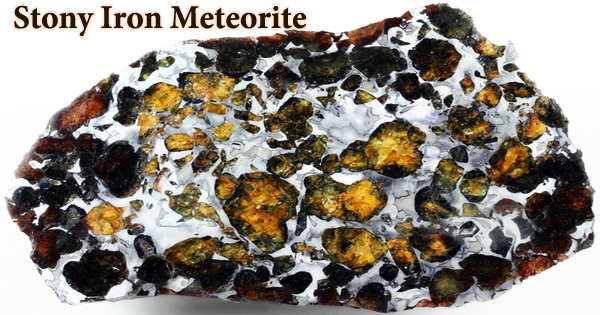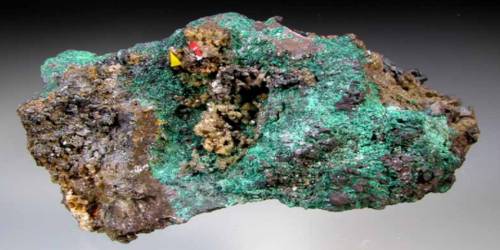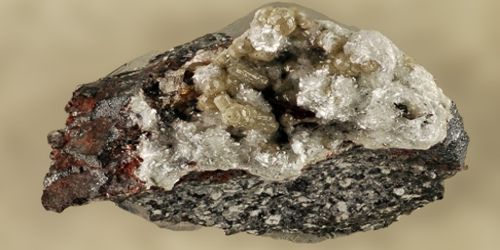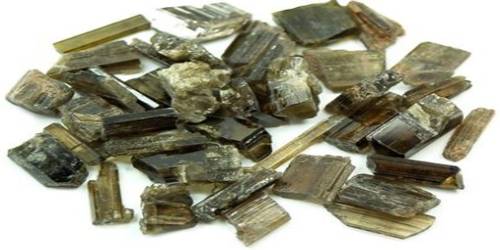Siderolites, or stony-iron meteorites, are meteorites that contain significant concentrations of both rocky materials (silicates) and nickel-iron metal. Meteorites are classified into three primary groups: irons, stones, and stony-irons, which have a huge number of subclasses. Iron meteorites are largely comprised of iron and nickel and were formerly found in the cores of planets or massive asteroids. The most common form of meteorite is a stone, which was previously part of the crust of asteroids in the Asteroid Belt.
Meteoroids are rocky or metallic objects that circle the sun. Stony-iron meteorites are all differentiated, meaning they exhibit indications of modification; they are consequently achondrites. Meteoroids become meteors when they collide with Earth’s atmosphere and the gases surrounding them temporarily light up as “shooting stars.” While most meteors burn up and dissipate in the atmosphere, meteorites are formed when these space rocks hit the Earth’s surface. Although many include particles of alien nickel-iron as well as chondrules, they resemble terrestrial rocks in many ways.

These meteorites, sometimes known as stony irons, are a kind of meteorite that falls between stony meteorites and iron meteorites. The stony-irons, the least common of the three main kinds, make up less than 2% of all known meteorites. Mesosiderites and pallasites are two types of stony-irons.
- Pallasites contain a meteoric iron matrix with silicates imbedded in them (most of it olivine). Pallasites exhibit translucent crystals when cut and polished, which are natively green but can take on yellow, gold, or brown colors due to terrestrial weathering.
- Mesosiderites are metamorphic breccias that exhibit evidence of transformation. Instead of a matrix, meteoric iron is found in clasts. Against the black silicates, silvery metallic flakes and veins show out vividly, and polished, prepared slices are occasionally suggestive of the night sky.
Originally considered to be similar in origin and composition, the two varieties of stony-irons are now understood to have originated in completely distinct ways and are grouped together not because they are similar to one other, but because they are so different from other meteorites. They are at the top of all Meteorite categorization schemes, which are typically referred to as “Type.” To put it another way, stony-irons are a combination of nickel-iron and silicates.
Most meteorites resemble rocks found on Earth, with the exception that meteorites have a black, burnt appearance. As the meteorite descends toward Earth, friction from the environment melts the meteorite, forming its exterior. The meteoric iron of stony-irons is comparable to that of iron meteorites, with varying amounts of kamacite and taenite. The nickel-iron is a cohesive mass containing distinct stony portions in specimens of one common kind of stony iron, known as pallasites (previously termed lithosiderites).
Pallasites are named after Peter Pallas, a German naturalist and adventurer who reported the Russian meteorite Krasnojarsk, which was discovered in the same-named Siberian city in the 18th century. Marjalahti, a 45-kg meteorite, landed in Russia’s Respublika Kareliya in 1902. It’s one of just three known witnessed-fall pallasites. Many pallasites are thought to be remnants of an asteroid’s core-mantle border, according to astronomers.
Their chemical makeup is similar to that of numerous iron meteorites, leading scientists to believe they are fragments of the same asteroid that shattered when it collided with the Earth’s atmosphere. Pallasites are an immiscible emulsion, similar to oil and water. Fractional crystallization should separate the two main minerals during differentiation. The ultramafic mineral olivine originates and accumulates deep within an asteroid body.
Carlsbergite, chromite, cohenite, daubréelite, feldspar, graphite, ilmenite, merrillite, low-calcium pyroxene, schreibersite, tridymite, and troilite are non-silicate accessory minerals. The smallest of the two stony-iron groupings is the mesosiderites. When cut and polished, they generally reveal an appealing, high-contrast silver and black matrix, with the apparently random combination of inclusions resulting in some extremely remarkable characteristics.
Mesosiderites are composed of roughly equal amounts of nickel-iron and stony components and get their name from the Greek words “iron” and “half.” Most are brecciated, with fractured and irregular inclusions of magnesium-rich silicate minerals. Against the black silicates, silvery metallic flakes and veins show out vividly, and polished, prepared slices are occasionally suggestive of the night sky.
Because of the breccia-like uniformity of mesosiderites, meteoriticists believe they were produced by enormous asteroidal impacts that merged diverse kinds of material into a single mass. Meteorites slam into the Earth’s atmosphere with devastating power. Impact craters are huge holes in the earth left by the biggest meteorites.
Information Sources:
















